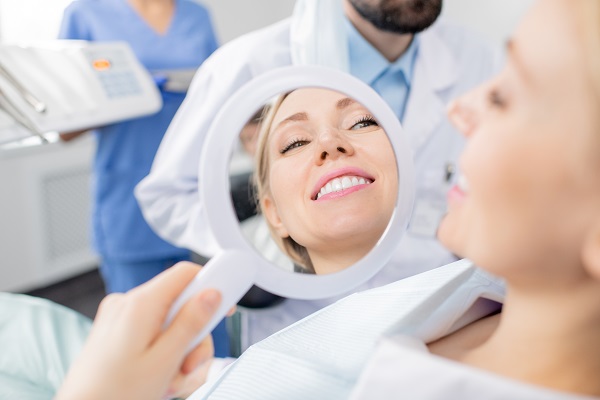What’s the Difference Between a Direct and an Indirect Dental Restoration?

Direct and indirect dental restorations are the two types of restorations available. When your teeth are broken, chipped, decayed or cracked, dental restoration procedures restore the teeth to their original state. The choice of the type of restoration depends on the nature and severity of the tooth problem.
Direct vs. indirect dental restorations
Read on to find out the main differences between direct and indirect dental restorations.
Direct dental restorations
Direct restorations are options that can be completed in a single procedure during a dental office visit. Tooth filling for cavities is the most common direct dental restoration procedure. The dentist will determine the right filling for the patient based on preferences and the position of the tooth within the mouth. Direct dental restorations are generally easy and straightforward, and they are used for correcting minor dental issues.
Indirect dental restorations
Indirect dental restorations entail multiple complex procedures to treat a dental problem. Therefore, these procedures usually require multiple appointments with a dentist. Common procedures in this category include crowns, veneers, bridges, dentures, implants, inlays and onlays. The patient may need to undergo x-ray scans and have their dental impression taken.
Indirect tooth restorations involve parts that are produced by a dental laboratory. The dental lab can be inside the dental office or offsite. It is the process of producing the required restoration that necessitates multiple trips to the dental office. As the patient waits for the completion of the dental restoration, the dentist will provide a temporary option to prevent further damage or dental problems.
When the patient's dental restoration is available, the dentist will affix it in place to complete the restoration procedure. With advancements in dental technology, including the use of CAD and CEREC machines and 3D imaging, some dental restorations can now be completed in a single visit.
Choosing the right option
Both dental restoration options ensure patients get the required solution to their dental issues. Direct restorations are generally used when the patient's teeth are intact and in good enough condition to remain. Direct restorations sometimes require that a part of the tooth be trimmed off to create space for the restoration.
Indirect dental procedures are generally important for patients who have suffered extensive tooth decay or damage that may cause lost teeth. In some cases, a patient may need both direct and indirect dental restoration.
Practicing good oral hygiene and visiting the dentist regularly for checkups and cleaning can significantly reduce a person's need for dental restorations. Those who have not visited their dentist in a long time need to book an appointment as soon as possible. If the dentist detects dental issues early enough, the patient may not need a dental restoration and may be able to avoid complications that may result in extensive dental procedures.
Final note
If you have dental issues and need to undergo a dental restoration procedure, ensure you book an appointment with a dentist. The dental professional will evaluate your condition and determine whether direct or indirect restoration would be the best way to restore your smile.
Request an appointment here: https://www.krausedentalcare.com or call Krause Dental Care at (908) 272-3001 for an appointment in our Cranford office.
Check out what others are saying about our dental services on Yelp: Dental Restorations in Cranford, NJ.
Related Posts
Most people consider a smile makeover to address cosmetic problems with the teeth or gums; however, what many do not know is that oral health can also be improved in the process. Although some smile makeover procedures do not have any oral health benefits, a lot actually do. Continue reading to learn more about these…
If you feel more confident with whiter teeth and a brighter smile, then you should consider teeth whitening as a way to improve your smile. Teeth whitening is an in-office procedure that is safe and produces quick results that can last for a year or more. There are many benefits to teeth whitening from a general…
Anyone considering getting dentures to replace part or all of their teeth needs to look into all of the options available today. They have come a long way, and there is no reason for anyone not to take advantage of all their choices. Here is a list of different types, and there is always one…
Like the primary care physician, the general dentist should be one of your most important sources for maintaining good health. This dental professional can spot troubling issues in your mouth but also provide ongoing maintenance. When you choose a dentist, you can take the entire family, regardless of the person’s age or the severity of…
